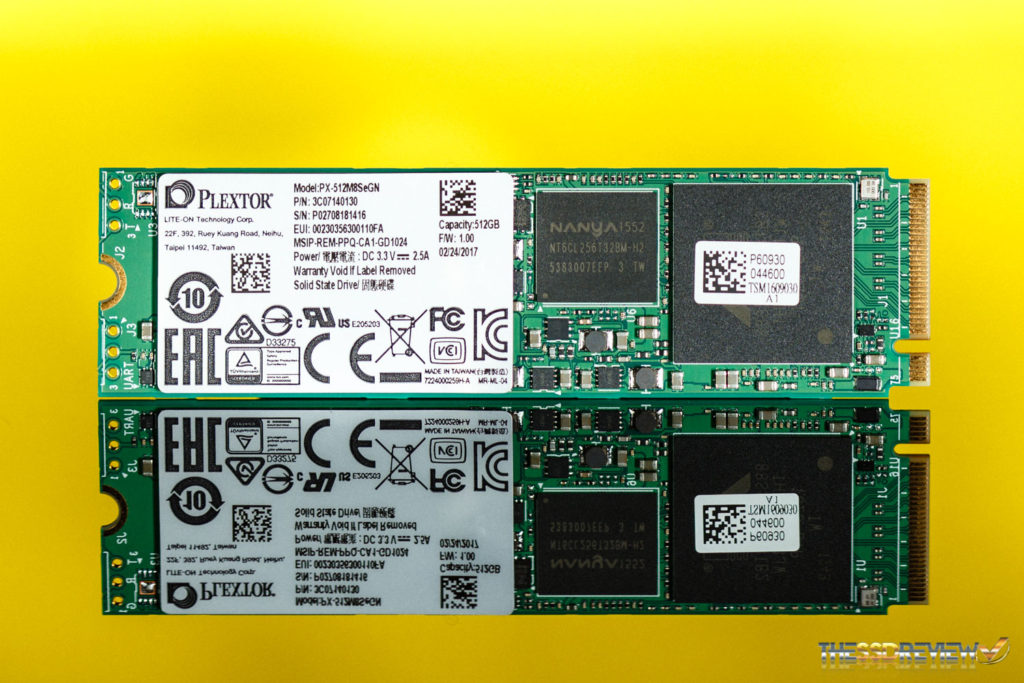It has been quite some time since we have reviewed a product from Plextor. In September of 2015 we took a look at the M6V, an entry-level SATA based SSD and before it, their flagship M6e Black edition, one of the very first NVMe SSDs in the market in the beginning of 2015. But, as of late, nothing…at least until now. Today we have in our hands the Plextor M8Se. The M8Se follows in the path of its ancestors…we can say ancestors, right? Two to three years past is ancient times in computer tech, eh?
Anyways, it follows the traditional Plextor combo: Toshiba NAND, a Marvell controller, and Plextor’s own firmware code. The NAND isn’t the newest stuff out. While we have been spoiled with 3D this and 3D that, the M8Se utilizes Toshiba’s 15nm planar TLC. This is of course paired with a Marvell eight-channel controller that features a three-core design and supports LDPC and is programmed in all by Plextor. It doesn’t end there, though. In addition, they have opted to design the drive with a larger DRAM buffer than the traditional 1:1 ratio, instead it utilizes 2MB DRAM to 1GB of NAND, or in this case, 1GB of DRAM for our 512GB model.
In all, this is actually very similar to the WD Black PCIe NVMe SSD we tested back in March. It featured the same controller and similar SanDisk branded 15nm TLC, although, the WD Black’s performance just wasn’t that impressive in the end. So, with the larger DRAM buffer, a promise of faster speeds, and their own twist on the firmware, the Plextor M8Se will be a bit more exciting to test. But, that is all speculation at this point. Read on and find out if the M8Se is the right choice for you or if it is just another low-end TLC SSD for your grandma.
SPECIFICATIONS, PRICING, AND AVAILABILITY
The Plextor M8Se is a PCIe 3.0 x4 NVMe SSD. It comes in an M.2 2280 form factor and is available in an HHHL add-in card form factor as well. There are three different SKUs for the M8Se, one is the barebones model we are testing today, the M8SeGN, another featuring a heat sink, the M8SeG, and the third featuring an even larger heatsink on an HHHL M.2 to PCIe AIC adaptor, the M8SeY. It is available in capacities of 128GB (~$80), 256GB (~$125-170), 512GB (~$250-270), and 1TB (~$450). The performance varies depending on the capacity. It is rated for up to 2,450MB/s read and 1,000MB/s write. IOPs are rated for up to 210K read and 175K write. Starting with the 128GB model’s 80TBW, each drive’s endurance scales with the capacity increase by doubling up to 640TBW for the 1TB model. The MTTF rating comes in at 1.5 million hours and the warranty and technical support period is for 3-years.
The Plextor M8Se supports TRIM, NCQ, and features SMART support. Firmware upgrades are also available. We upgraded from firmware v1.0 to the current v1.1 firmware to ensure the best performance for this review. With the use of a Marvell 88SS1093 controller, the M8Se supports low parity density checking error correcting code as well as other robust algorithms to help improve stability and reliability. It also features PlexNitro Cache, which is a cache acceleration technology used to help improve read and write speeds of this TLC SSD while allowing Plextor to commit the full capacity to the SSD rather than take away, i.e. 512GB vs 480GB.
PACKAGING AND COMPONENTS
The packaging is very stylish with a blue and white theme with a wave-like pattern. M8Se is printed out in large font on the front and some of the main info such as capacity, interface, form factor, and warranty surround it. On the back are more specifications such as speed and other details for support and what is included in the box.
Out of the package, the M8Se SSD is quite plain looking. Our 512GB model is a single-sided PCB design, meaning all the components are on the front and backside is bare. For systems that can only accept a single-sided PCB, this is good news.
Taking a closer look at the SSD we can see that it utilizes two 256GiB Toshiba 15nm planar TLC NAND chips, a single 1GB DRAM cache chip, and as mentioned earlier, a Marvell 1093 controller. The total available capacity to the end user once formatted is 476GB as reported by Windows.
 The SSD Review The Worlds Dedicated SSD Education and Review Resource |
The SSD Review The Worlds Dedicated SSD Education and Review Resource | 


Curious as to why the read performance in the ATTO benchmark drops off at the highest queue depths.
probably cause the heat